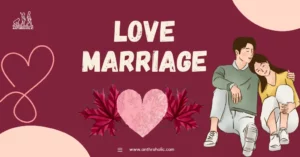AI Answer Evaluation Platform Live Now. Try Free Answer Evaluation Now
Features of Tribal Life
Tribal communities around the globe exhibit unique social, cultural, and economic patterns that set them apart from mainstream societies. They possess a distinctive lifestyle characterized by rich traditions, belief systems, societal structures, and economic practices, deeply rooted in their intimate relationship with the environment.

Characteristics of Tribal Life
Deep-rooted Traditions and Beliefs
Tribal communities harbor an array of cultural richness reflected through their various traditions, ceremonies, and belief systems [1]. Often, they have distinctive myths, folk tales, songs, dances, and rituals, which pass on wisdom and historical knowledge through generations. Their strong faith in spirits and ancestors further enriches their cultural complexity.
Communal Lifestyle
Tribes emphasize community and collective identity. They live in closely-knit communities, where members work together for common goals and share resources equitably. Individual desires are often superseded by collective interests [2].
Economic Practices
Tribes typically engage in a sustainable, subsistence-based economy, primarily involving hunting, gathering, fishing, and simple agriculture. They often trade or barter surplus goods within or among other tribes[3].
Language and Communication
Tribal languages are unique, often exclusive to a particular tribe, and contribute significantly to the world’s linguistic diversity. Many tribes also employ non-verbal communication methods, such as sign language, body language, and artistic symbols [4].
Societal Structures
Kinship System
Tribal societies are characterized by complex kinship systems, determining social relationships, marriages, and familial responsibilities. Members of a tribe identify themselves in terms of their kinship ties.
Political Structure
In most tribal societies, leadership roles are not formalized. Leaders, often elders or individuals with specific skills or wisdom, are recognized on the basis of their abilities rather than through inheritance or election. Decision-making is usually collective and consensus-based [5].
Role of Women
In many tribes, women play significant roles in their communities. They often participate in decision-making, economic activities, and cultural preservation. This often contrasts with gender roles in many non-tribal societies [6].
Interaction with the Environment
Tribal societies typically have a symbiotic relationship with their environment, exhibiting respect and reverence towards nature. They have intricate knowledge about local flora, fauna, and ecological practices, often utilized for sustenance, medicine, and spiritual practices. Tribal societies also play a critical role in conservation due to their sustainable living practices [7].
| Characteristics | Description |
|---|---|
| Traditions and Beliefs | Unique myths, folk tales, songs, dances, and rituals |
| Economic Practices | Subsistence-based economy involving hunting, gathering, fishing, and agriculture |
| Language and Communication | Unique tribal languages and non-verbal communication |
| Kinship System | Complex kinship systems determining social relationships |
| Political Structure | Leadership based on abilities, collective decision-making |
| Role of Women | Active participation in decision-making, economic activities, cultural preservation |
| Interaction with the Environment | Symbiotic relationship, intricate knowledge about local ecology, sustainable practices |
Ecological Wisdom and Practices
Resource Management
Tribal communities have demonstrated sustainable resource management for generations, using methods that ensure resource regeneration and environmental preservation. They have acquired profound knowledge about their local environment, which informs their resource extraction and utilization strategies [8].
Agricultural Practices
Tribal agriculture often uses nature-friendly techniques, including shifting cultivation, terrace farming, and organic farming, which ensure soil health and biodiversity. They also engage in the domestication and cultivation of various plant species, contributing to agricultural biodiversity [9].
Medicinal Knowledge
Tribes hold a wealth of medicinal knowledge, often unknown to modern science. They utilize locally available flora and fauna for medicinal purposes, and this traditional knowledge is often passed down through generations [10].
| Ecological Practices | Description |
|---|---|
| Resource Management | Sustainable methods to ensure resource regeneration and environmental preservation |
| Agricultural Practices | Nature-friendly techniques like shifting cultivation, terrace farming, and organic farming |
| Medicinal Knowledge | Utilization of local flora and fauna for medicinal purposes |
Challenges Faced by Tribal Communities
Despite their rich culture and practices, tribal communities face numerous challenges, such as cultural erosion, loss of traditional knowledge, land rights issues, and socio-economic disadvantages.
Cultural Erosion
Modernization and globalization have had profound impacts on tribal societies, leading to the erosion of their cultural identity. Many tribal languages and customs are on the verge of extinction [11].
Loss of Traditional Knowledge
The transmission of traditional knowledge is under threat due to the influence of mainstream culture and education, leading to the loss of invaluable wisdom [12].
Land Rights Issues
Tribes often face conflicts over land and resources, as their traditional territories are encroached upon for agriculture, mining, and industrial projects [13].
Socio-economic Disadvantages
Tribes often experience socio-economic disadvantages due to limited access to healthcare, education, and livelihood opportunities [14].
Conclusion
Tribal life is a tapestry of rich traditions, sustainable practices, communal harmony, and deep reverence for the natural world. Understanding these unique features not only enlightens us about diverse ways of life but also highlights the importance of maintaining cultural diversity and ecological balance on our shared planet.
References
[1] R. C. Maurya, (2012). “Traditional Cultures and Societies of India”. Mumbai: Himalaya Publishing House.
[2] N. Nugent, (2011). “The Government and Politics of the European Union”. Duke University Press.
[3] A. Barnard, (2004). “Hunter-gatherers in History, Archaeology and Anthropology”. Berg Publishers.
[4] A. Grenoble, (2011). “Language Ecology and Endangerment”. In: Austin PK, Sallabank J, editors. Cambridge Handbook of Endangered Languages. Cambridge University Press. https://doi.org/10.1177/0261927X13479189
[5] P. Lienhardt, (1961). “Divinity and Experience: The Religion of the Dinka”. Oxford University Press.
[6] M. Leacock, (1981). “Myths of Male Dominance”. Monthly Review Press.
[7] B. Berkes, (2012). “Sacred Ecology”. Routledge.
[8] D. Posey, (1999). “Cultural and Spiritual Values of Biodiversity”. UNEP/Earthscan.
[9] M. Gadgil, (1992). “Conserving Biodiversity as if People Matter: A Case Study from India”. Ambio.
[10] A. Pieroni, (2001). “Tribal Medicinal Plants”. Parthenon Publishing Group.
[11] D. Harmon, (2002). “In Light of Our Differences: How Diversity in Nature and Culture Makes Us Human”. Smithsonian Institution Press.
[12] UNESCO, (2003). “Safeguarding Intangible Cultural Heritage”. UNESCO.
[13] N. Kirsch, (2001). “Indigenous Peoples and Land Rights: Conflict and Resolution”. Oxford University Press.
[14] World Bank, (2011). “Indigenous Peoples, Poverty, and Development”. Cambridge University Press.




